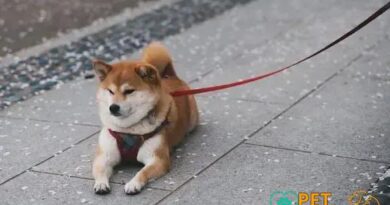What is Thinning
What is Thinning in Dog Grooming?
Thinning is a grooming technique used to reduce the bulk of a dog’s coat without altering its overall length. This method is particularly beneficial for breeds with thick or double coats, as it allows for better air circulation and helps to prevent matting. Thinning shears, which have a serrated edge, are commonly used to achieve this effect, making it easier to blend and shape the fur while maintaining a natural look.
Benefits of Thinning for Your Dog
One of the primary benefits of thinning is that it can significantly improve your dog’s comfort, especially during warmer months. By reducing the density of the coat, thinning helps to keep your pet cooler and more comfortable. Additionally, this technique can enhance the appearance of your dog’s coat, giving it a more polished and well-groomed look. Thinning can also help to manage shedding, as it removes excess fur that may otherwise contribute to hair around your home.
When to Consider Thinning Your Dog’s Coat
Thinning is particularly useful for dogs with long, thick, or curly coats that tend to mat easily. Breeds such as Golden Retrievers, Poodles, and Siberian Huskies often benefit from this grooming technique. If you notice that your dog’s coat is becoming unmanageable or if they seem uncomfortable due to heat, it may be time to consider thinning as part of their grooming routine.
How Thinning Differs from Regular Grooming
While regular grooming involves brushing and cutting the coat to maintain its length and health, thinning specifically targets the density of the fur. Regular grooming may not adequately address issues of bulkiness, which is where thinning comes into play. This technique focuses on creating a lighter, more manageable coat while preserving the overall style and length that suits your dog’s breed.
Tools Used for Thinning
The primary tool used for thinning is the thinning shear, which features a unique design with one straight blade and one serrated blade. This allows for the removal of fur without creating blunt edges, resulting in a more natural look. Other tools, such as combs and brushes, may also be used in conjunction with thinning shears to ensure that the coat is evenly distributed and free of tangles.
Thinning Techniques for Different Breeds
Different dog breeds may require specific thinning techniques to achieve the best results. For example, a Poodle may need more extensive thinning around the legs and face to maintain its signature look, while a Golden Retriever may benefit from thinning primarily along the body to reduce bulk. Understanding the unique grooming needs of your dog’s breed is essential for effective thinning.
Professional vs. At-Home Thinning
While some dog owners may choose to thin their pet’s coat at home, it is often recommended to seek the help of a professional groomer, especially for those unfamiliar with the technique. Professional groomers have the experience and tools necessary to thin a dog’s coat safely and effectively, minimizing the risk of injury and ensuring a polished finish.
Signs Your Dog Needs Thinning
If you notice that your dog is frequently overheating, has a matted coat, or is experiencing discomfort during grooming sessions, these may be signs that thinning is needed. Additionally, if your dog’s coat appears excessively bulky or unkempt, it may be time to consider incorporating thinning into their grooming routine to improve their overall appearance and comfort.
Aftercare Following Thinning
After thinning, it’s important to maintain your dog’s coat to keep it looking its best. Regular brushing is essential to prevent matting and to distribute natural oils throughout the fur. Additionally, scheduling regular grooming appointments can help to keep your dog’s coat healthy and manageable, ensuring that thinning remains effective over time.



